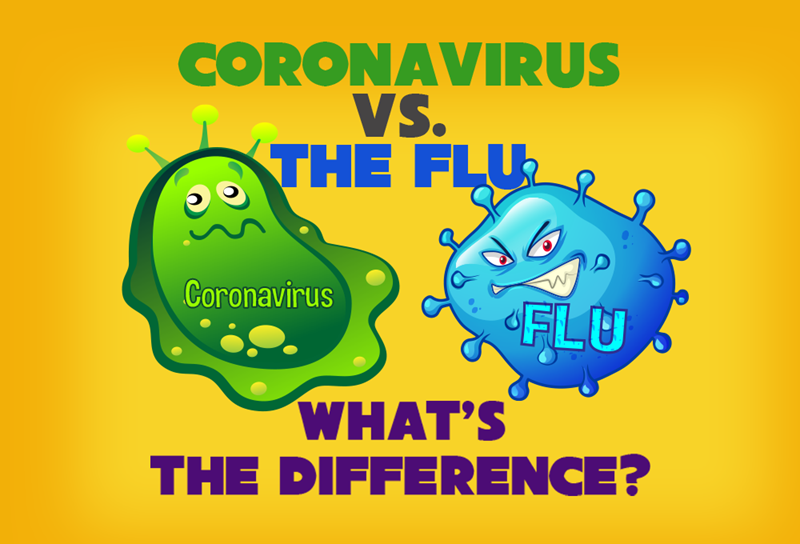
Because of the dual danger of Influenza (flu) and COVID-19, the Center for Disease Control and Prevention (CDC) recently warned that this fall and winter could be the worst ever for public health. Understanding this, knowing the differences and similarities between the viruses, and knowing what you can do to protect yourself is the best way to stay healthy and safe through this difficult time.
Flu vs COVID
Because many of the symptoms of flu and COVID-19 are similar, it may be hard to tell the difference between them based on symptoms alone, so testing may be needed to help confirm a diagnosis. With that said, here are some similarities and differences you should know.
For starters, seasonal flu symptoms come on pretty quickly, whereas COVID-19 develops gradually over a period of a few days and then either fades out or gets worse. Common shared symptoms include fever, sore throat, muscle aches, cough, headache, fatigue and even chest pain. Pinkeye and a dry cough are associated with COVID-19, while it’s now thought that a fever is more likely with the flu, as are diarrhea and nausea.
Many people are having their temperatures taken these days before entering public spaces. But fever occurs in only half of COVID-19 cases. Fever does not rule out COVID-19, but the absence of fever makes flu unlikely.
You’re also unlikely to have a runny or stuffy nose with the flu, but you may with COVID-19. What sometimes happens within the nose with COVID-19 is loss of smell and, often as a consequence, loss of taste, too.
To learn more about the similarities and differences between flu and COVID-19, visit the CDC website.
How to Protect Yourself
While there is currently no vaccine available yet to prevent COVID-19, the best way to prevent illness is to avoid being exposed to this virus. So, stay home as much as you can. If you have to go out, wear a mask and keep at least 6 feet away from other people. And every time you come home, wash your hands with warm water and soap for at least 20 seconds.
There’s also evidence that suggests that people who are deficient in vitamin D may be at higher risk of getting COVID-19, than those with sufficient levels. So, make sure you take in around 800 to 1,000 international units (IUs) of vitamin D from food or supplements daily, and get outside as much as you can.
And to help guard against the flu this year, you should consider getting a flu shot that’s specifically designed for people 65 and older. The “Fluzone High Dose Quadrivalent” or the “FLUAD Quadrivalent” are the two options that provide extra protection beyond what a standard flu shot offers. You only need one flu shot, and if you haven’t already gotten it, you should do it now because takes up to two weeks to build immunity after you receive it.
Pneumonia Vaccines
If you haven’t been vaccinated for pneumonia, you should also consider getting the pneumococcal vaccines. Both flu and COVID-19 can lead to pneumonia, which hospitalizes around 250,000 Americans, and kills around 50,000 people each year. But these numbers could be much higher this year.
The CDC recommends that all seniors, 65 or older, get two vaccinations – Prevnar 13 and Pneumovax 23. Both vaccines, which are administered one year apart, protect against different strains of the bacteria to provide maximum protection.
Medicare Part B covers both flu and pneumonia shots.
To locate a vaccination site that offers any of these shots, visit VaccineFinder.org and type in your location.
Jim Miller publishes the Savvy Senior, a nationally syndicated column that offers advice for Boomers and Seniors.
Related Articles & Free Subscription

Financial Help for Retirees Affected by COVID-19
How to Prevent Falls During a Pandemic





Comment here